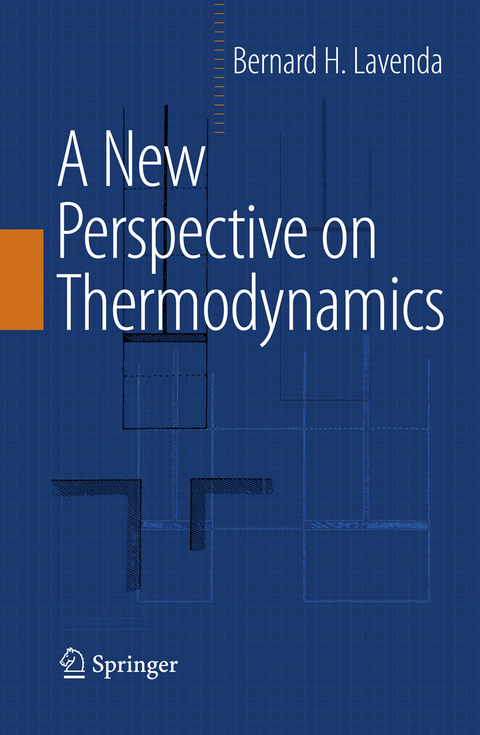
A New Perspective on Thermodynamics
Seiten
2014
Springer-Verlag New York Inc.
978-1-4899-8404-3 (ISBN)
Springer-Verlag New York Inc.
978-1-4899-8404-3 (ISBN)
This book introduces a new outlook on thermodynamics. It brings the theory up to the present time and indicates areas of further development with the union of information theory and the theory of means and their inequalities.
More than to any other single individual, thermodynamics owes its creation to Nicolas-Leonard-Sadi ' Carnot. Sadi, the son of the "great Carnot" Lazare, was he- ily in uencedby his father. Not onlywas LazareMinister of War duringNapoleon's consulate, he was a respected mathematician and engineer in his own right. Ma- ematically, Lazare can lay claim to the de nition of the cross ratio, a projective invariant of four points. Lazare was also interested in how machines operated, - phasizing the roles of work and "vis viva," or living force, which was later to be associated with the kinetic energy. He arrived at a dynamical theory that machines in order to operate at maximum ef ciency should avoid "any impact or sudden change. " This was the heritage he left to his son Sadi. The mechanics of Newton, in his Principia, was more than a century old. It dealt with the mechanics of conservative systems in which there was no room for p- cesses involving heat and friction. Such processes would ruin the time reversibility of mechanical laws, which could no longer be derived by minimizing the difference between kinetic and potential energies.
When Sadi wrote his only scienti c work in 1824, there were no laws governing the mechanical effects of heat. In fact, caloric theory was still in vogue, which treated heat as an imponderable uid that was c- served.
More than to any other single individual, thermodynamics owes its creation to Nicolas-Leonard-Sadi ' Carnot. Sadi, the son of the "great Carnot" Lazare, was he- ily in uencedby his father. Not onlywas LazareMinister of War duringNapoleon's consulate, he was a respected mathematician and engineer in his own right. Ma- ematically, Lazare can lay claim to the de nition of the cross ratio, a projective invariant of four points. Lazare was also interested in how machines operated, - phasizing the roles of work and "vis viva," or living force, which was later to be associated with the kinetic energy. He arrived at a dynamical theory that machines in order to operate at maximum ef ciency should avoid "any impact or sudden change. " This was the heritage he left to his son Sadi. The mechanics of Newton, in his Principia, was more than a century old. It dealt with the mechanics of conservative systems in which there was no room for p- cesses involving heat and friction. Such processes would ruin the time reversibility of mechanical laws, which could no longer be derived by minimizing the difference between kinetic and potential energies.
When Sadi wrote his only scienti c work in 1824, there were no laws governing the mechanical effects of heat. In fact, caloric theory was still in vogue, which treated heat as an imponderable uid that was c- served.
The Predecessors of Carnot.- Thermodynamics from Carnot to Clausius and Kelvin.- Thermodynamics in a Carnot Equation.- Equivalence of First and Second Laws.- Work from Nonequilibrium Systems.- Nonextensive Thermodynamics.
| Erscheint lt. Verlag | 7.9.2014 |
|---|---|
| Zusatzinfo | XIX, 207 p. |
| Verlagsort | New York |
| Sprache | englisch |
| Maße | 155 x 235 mm |
| Themenwelt | Mathematik / Informatik ► Mathematik ► Wahrscheinlichkeit / Kombinatorik |
| Naturwissenschaften ► Physik / Astronomie ► Thermodynamik | |
| Technik ► Elektrotechnik / Energietechnik | |
| Technik ► Maschinenbau | |
| ISBN-10 | 1-4899-8404-6 / 1489984046 |
| ISBN-13 | 978-1-4899-8404-3 / 9781489984043 |
| Zustand | Neuware |
| Haben Sie eine Frage zum Produkt? |
Mehr entdecken
aus dem Bereich
aus dem Bereich
Buch | Softcover (2024)
Springer Spektrum (Verlag)
CHF 62,95
Eine Einführung in die faszinierende Welt des Zufalls
Buch | Softcover (2024)
Springer Spektrum (Verlag)
CHF 55,95


